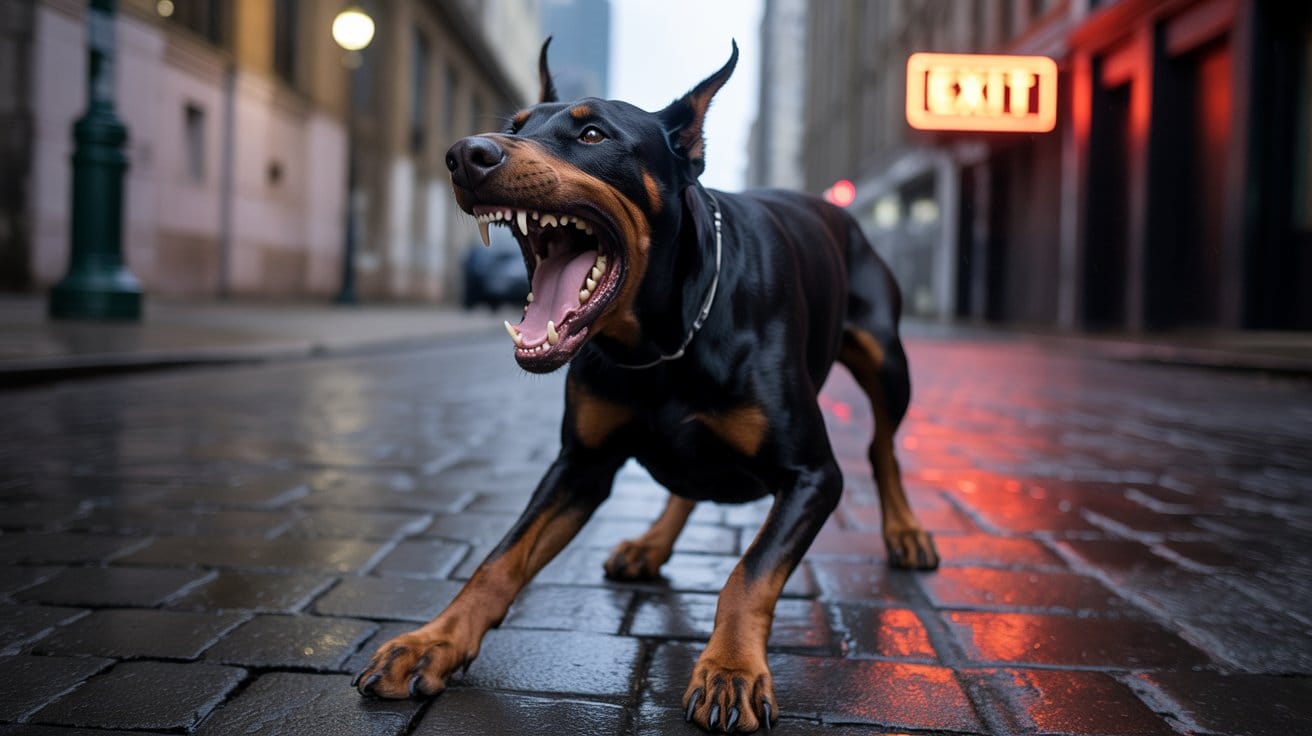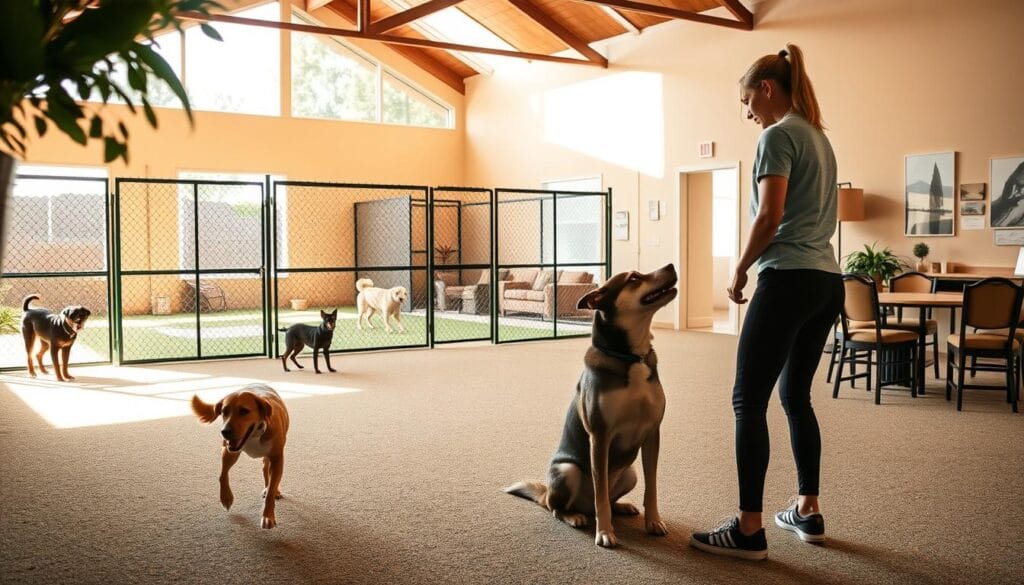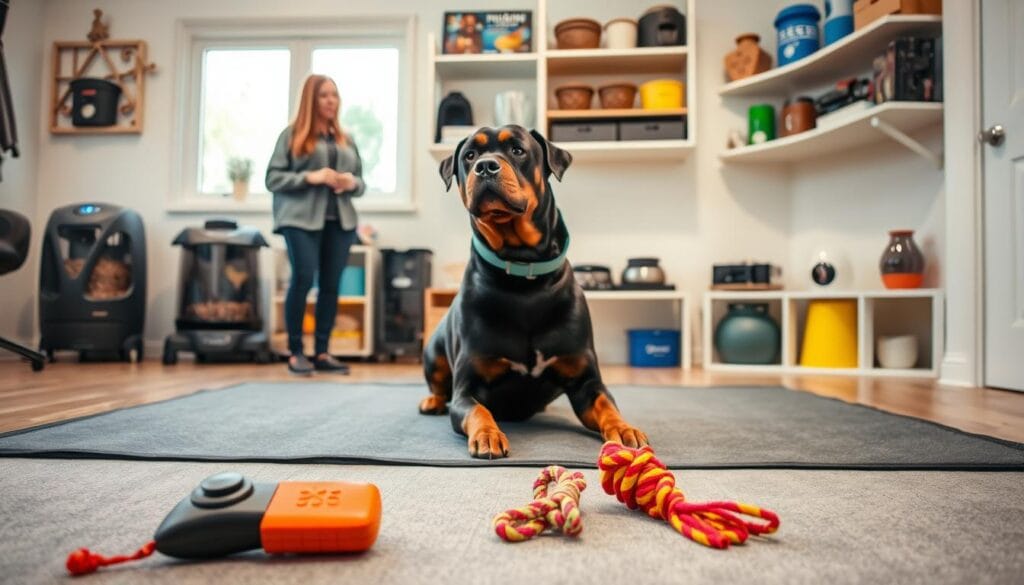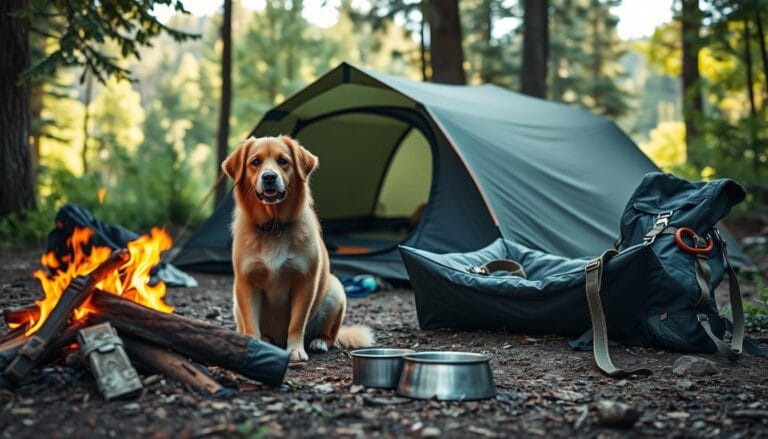Aggressive Dog Training Near Me – 9 Tips to Transform Behavior

Dealing with an aggressive canine can be a challenging and stressful experience for any pet owner. The situation becomes even more daunting when you’re unsure where to turn for help. Fortunately, finding effective aggressive dog training near me can make a significant difference.
With the right guidance, you can transform your dog’s behavior and strengthen your bond. This article outlines nine crucial tips to help you address aggression issues and find the support you need locally.
By understanding the root causes of aggression and implementing the right strategies, you can help your dog become a well-behaved and loving companion.
Table of Contents
Understanding Aggressive Dog Behavior
Aggressive dog behavior is a complex issue that requires a comprehensive understanding to address effectively. If you’re searching for aggressive dog training near me, it’s essential to first delve into the different types of canine aggression and the underlying reasons for such behavior.
Common Types of Canine Aggression
Canine aggression can manifest in various forms, including territorial aggression, fear-based aggression, and social aggression. Professional dog behavior specialists often categorize aggression into different types to develop targeted training strategies. Understanding these categories is crucial for dog owners to identify the specific needs of their pets.
Root Causes of Aggressive Behavior in Dogs
The root causes of aggressive behavior in dogs can range from genetic predispositions to environmental factors. Past experiences, socialization, and training methods all play a significant role in shaping a dog’s behavior. Identifying these underlying causes is vital for developing an effective training plan—especially if you’re considering aggressive dog training near me as a solution.
Signs Your Dog Needs Professional Intervention
If your dog exhibits persistent aggressive behavior, such as growling, snapping, or biting, it may be a sign that they need certified dog trainers or professional help. Recognizing these signs early can prevent the situation from escalating and ensure the dog receives the necessary support.
By understanding the complexities of aggressive dog behavior, dog owners can take the first step towards transforming their dog’s actions and improving their overall well-being.
Finding Aggressive Dog Training Near Me: What to Look For
When searching for ‘aggressive dog training near me,’ it’s crucial to identify trainers with the right qualifications. Aggressive dog behavior is a serious issue that requires professional handling. The best dog trainers are those who understand canine behavior and have experience in dealing with aggression.
Qualifications of Professional Dog Behavior Specialists
When looking for aggressive dog training near me, it’s important to choose professional dog trainers who specialize in aggression and hold certifications from reputable organizations. These certifications indicate that the trainer has undergone rigorous training and has a deep understanding of canine behavior. Some notable certifications include CPDT (Certified Professional Dog Trainer) and CDBC (Certified Dog Behavior Consultant).
| Certification | Description | Issuing Organization |
|---|---|---|
| CPDT | Certified Professional Dog Trainer | Certification Council for Professional Dog Trainers |
| CDBC | Certified Dog Behavior Consultant | International Association of Animal Behavior Consultants |
| KPA | Karen Pryor Academy Certified Training Partner | Karen Pryor Academy |
Questions to Ask Potential Dog Trainers
Before enrolling your dog in a training program, it’s essential to ask the right questions. Inquire about their experience with aggressive dogs, their training methods, and the qualifications of their staff. A reputable trainer will be transparent about their methods and will be willing to provide references.
- What experience do you have with aggressive dogs?
- What training methods do you use?
- Can you provide references from previous clients?
Red Flags to Avoid When Choosing a Trainer
Not all dog trainers are created equal. Some may use outdated or harmful training methods. Be wary of trainers who promise quick fixes or use punitive measures. These methods can exacerbate aggression and damage the bond between you and your dog.
Finding the right local dog training classes requires patience and diligence. By understanding what to look for in a trainer and being aware of the red flags, you can make an informed decision that will benefit your dog’s behavioral health.
Tip1: Establish Clear Leadership and Boundaries
Experienced canine behavior experts agree that establishing leadership and boundaries is key to reducing aggression in dogs. By setting clear rules and being consistent, dog owners can significantly improve their pet’s behavior.
Implementing Consistent Rules at Home
Consistency is crucial when dealing with aggressive dogs. Establishing a routine helps dogs understand what is expected of them. Here are some tips to implement consistent rules at home:
- Set clear boundaries and rules
- Ensure all family members are on the same page
- Use positive reinforcement techniques
The Importance of Structure in Daily Routines
A structured daily routine provides a sense of security and stability for dogs. This includes regular times for feeding, exercise, and play. A well-structured routine can help reduce anxiety and aggression.
How Leadership Affects Aggressive Tendencies
Effective leadership can significantly impact a dog’s aggressive tendencies. By being a calm, assertive leader, you can help your dog feel more secure and reduce aggression. Aggressive dog behavior modification starts with the owner establishing a strong, positive leadership role.
By following these tips and maintaining a consistent, structured environment, you can help transform your dog’s behavior and reduce aggression.
Tip2: Proper Socialization Techniques for Aggressive Dogs
Proper socialization is a critical component in transforming the behavior of aggressive dogs. It involves exposing your dog to various environments, people, and other animals in a controlled manner to reduce aggression.
Controlled Exposure Methods
Controlled exposure is about gradually introducing your dog to triggers that cause aggression, starting from a safe distance. This method helps in reducing the dog’s stress response over time. Local dog training services often employ this technique with great success.
Creating Positive Associations with Triggers
Creating positive associations involves rewarding your dog for calm behavior when exposed to triggers. Positive reinforcement dog training is particularly effective here, as it encourages good behavior by associating triggers with positive outcomes.
Gradual Progression in Social Settings
Gradual progression means slowly increasing the intensity of social interactions your dog has, always monitoring for signs of stress. This could involve:
- Starting with small, manageable steps in controlled environments.
- Gradually increasing exposure to more people, noises, and other animals.
- Rewarding calm behavior consistently.
By following these steps and utilizing positive reinforcement dog training techniques, you can significantly improve your dog’s social behavior.
Tip3: Positive Reinforcement Training Strategies
Positive reinforcement is a cornerstone of effective dog training, offering a humane approach to behavior modification. This method focuses on encouraging desired behaviors rather than punishing undesired ones, creating a more positive and trusting relationship between dog and owner.
Reward-Based Systems That Work
Reward-based systems are fundamental to positive reinforcement training. By associating desired behaviors with rewards such as treats, praise, or play, dog owners can encourage their pets to exhibit these behaviors more frequently. The key is to be consistent and timely with rewards to help the dog understand what behavior is being reinforced.
Clicker Training for Aggressive Dogs
Clicker training is a specific type of reward-based training that uses a clicker to mark the exact moment a desired behavior occurs. This clear and immediate feedback helps dogs understand what they did right, making it easier to learn new behaviors. For aggressive dogs, clicker training can be particularly effective as it provides a precise way to communicate and reinforce calm behaviors.
Building New Behavior Patterns
Building new behavior patterns involves not just teaching new behaviors but also replacing old, undesired ones. Through consistent application of positive reinforcement techniques, dog owners can gradually shape their dog’s behavior. It’s essential to be patient and persistent, as changing behavior takes time and practice.
By incorporating positive reinforcement training strategies into their daily routine, dog owners can make significant strides in modifying their dog’s aggressive behavior. This approach not only helps in managing aggression but also strengthens the bond between dog and owner, leading to a more harmonious home environment.
Tip4: Managing Environmental Triggers
Understanding and controlling environmental triggers can make a significant difference in aggressive dog rehabilitation services. Environmental factors often play a crucial role in triggering aggressive behavior in dogs.

Identifying Specific Aggression Triggers
The first step in managing environmental triggers is to identify what causes your dog’s aggression. Common triggers include loud noises, strangers, and other animals. Keeping a journal of incidents can help you pinpoint specific triggers.
Creating Safe Spaces for Your Dog
Once you’ve identified your dog’s triggers, creating a safe space can help minimize their exposure to these triggers. A safe space is an area where your dog feels secure and relaxed, free from the triggers that cause aggression.
“A safe space can be a room or crate where your dog can retreat when feeling overwhelmed.”
Desensitization Techniques for Common Triggers
Desensitization involves gradually exposing your dog to their triggers at a level that doesn’t provoke a reaction, then rewarding calm behavior. This technique, often used by professional canine behaviorists, can be highly effective in reducing aggression.
By implementing these strategies, you can significantly reduce your dog’s aggressive behavior and improve their overall well-being.
Tip5: Physical Exercise and Mental Stimulation Requirements
To transform aggressive behavior, it’s essential to focus on a dog’s physical and mental well-being. Aggressive dogs often exhibit pent-up energy and frustration, which can be mitigated through regular exercise and mental stimulation. Engaging your dog in various physical activities and providing mental enrichment can significantly reduce aggressive tendencies.
Exercise Routines to Reduce Aggressive Behavior
Regular physical exercise is vital for burning off excess energy that might contribute to aggression. Activities such as brisk walking, jogging, or playing fetch can be effective. For instance, a 30-minute brisk walk twice a day can help reduce a dog’s overall energy levels and anxiety. Consistency is key; establishing a daily routine helps in managing aggressive behavior.
Mental Enrichment Activities for Behavioral Health
Mental stimulation is equally important as physical exercise. Engaging your dog in puzzle toys filled with treats or scent work can keep their mind occupied and reduce boredom. Interactive games like hide-and-seek or obedience training sessions can also provide the necessary mental stimulation. These activities not only challenge the dog but also strengthen the bond between the dog and the owner.
The Connection Between Boredom and Aggression
Boredom can often lead to destructive behavior and aggression in dogs. When dogs are not provided with adequate physical and mental stimulation, they may resort to undesirable behaviors. Ensuring that your dog has a variety of activities can prevent boredom. For example, rotating toys or introducing new games can keep your dog engaged and interested.
Tip6: When to Seek Aggressive Dog Training Near Me
If your dog’s aggression is becoming unmanageable, it’s time to consider seeking help from certified dog trainers who specialize in aggressive dog behavior. While home training is a good starting point, some situations require professional intervention to ensure the safety and well-being of both your dog and those around them.
Signs Your Home Training Isn’t Sufficient
There are several indicators that your home training efforts may not be enough to manage your dog’s aggression. These include:
- Increasing frequency or severity of aggressive episodes
- Lack of improvement despite consistent training efforts
- Uncertainty about how to handle specific triggers or situations
Recognizing these signs early can prompt you to seek local dog training classes that cater to aggressive dogs, providing you with the necessary tools and expertise.
Types of Professional Programs Available Locally
Local dog training classes offer a variety of programs tailored to address aggressive behavior. These may include:
- Group training sessions focusing on socialization and obedience
- One-on-one training sessions for personalized attention
- Behavioral modification programs designed to address specific aggression triggers
By enrolling in these programs, you can benefit from the guidance of experienced trainers who understand how to manage and modify aggressive behavior.
What to Expect from Professional Intervention
When you seek help from certified dog trainers, you can expect a comprehensive assessment of your dog’s behavior, followed by a customized training plan. Professional trainers will work with you to:
- Identify and address underlying causes of aggression
- Develop strategies for managing triggers and improving behavior
- Provide ongoing support and guidance throughout the training process
This structured approach ensures that you and your dog receive the support needed to achieve lasting behavioral improvements.
Tip7: Tools and Equipment for Managing Aggressive Dogs
Managing aggressive dogs requires the right tools and equipment to ensure safety and effective training. When dealing with aggressive behavior, it’s crucial to have the appropriate gear to handle the situation effectively.
Proper Use of Muzzles and Harnesses
Muzzles and harnesses are essential tools for managing aggressive dogs. A muzzle can prevent biting, while a harness can provide better control during walks. It’s vital to choose the right type of muzzle and harness for your dog’s specific needs.
- Select a muzzle that allows your dog to pant and drink comfortably.
- Opt for a harness that distributes the force of the leash across the dog’s chest and shoulders, rather than constricting the neck.
Training Aids That Help Control Aggression
Various training aids can help manage aggression in dogs. These include:
- Clickers: Useful for positive reinforcement training.
- Head halters: Can help control pulling on the leash.
- Interactive toys: Provide mental stimulation and can reduce aggression caused by boredom.

Tools to Avoid and Why
Not all tools are suitable for managing aggressive dogs. Avoid using:
- Prong collars: These can cause physical harm and increase aggression.
- Shock collars: Can lead to fear and anxiety, exacerbating aggressive behavior.
By choosing the right tools and equipment, you can more effectively manage your dog’s aggressive behavior and work towards a safer, more positive relationship.
Tip8: Building a Support Network for You and Your Dog
Managing an aggressive dog requires more than just training; it demands a comprehensive support system. A support network can provide valuable guidance, emotional support, and additional resources necessary for transforming your dog’s behavior.
Working with Veterinarians and Behaviorists
A crucial aspect of building a support network involves working closely with professionals such as veterinarians and certified animal behaviorists. These experts can offer insights into the underlying causes of your dog’s aggression and recommend tailored strategies for improvement.
- Veterinarians can rule out medical issues that may be contributing to aggressive behavior.
- Certified animal behaviorists can develop customized behavior modification plans.
By collaborating with these professionals, you can gain a deeper understanding of your dog’s needs and develop a more effective training plan.
Finding Support Groups for Owners of Aggressive Dogs
In addition to professional guidance, joining support groups can be incredibly beneficial. These groups provide a platform for sharing experiences, receiving advice, and gaining emotional support from others facing similar challenges.
Support groups can be found through local community centers, online forums, or organizations dedicated to dog behavior and welfare. Some benefits of participating in these groups include:
- Learning from others who have successfully managed their dog’s aggression.
- Gaining access to a wealth of information on training techniques and resources.
- Receiving emotional support and understanding from individuals who empathize with your situation.
The Importance of a Multi-Faceted Approach
A multi-faceted approach that combines professional guidance, support groups, and consistent training is key to successfully managing an aggressive dog’s behavior. This comprehensive strategy addresses the issue from various angles, ensuring a more balanced and effective transformation.
Key elements of a multi-faceted approach include:
- Professional guidance from veterinarians and behaviorists.
- Emotional support and practical advice from support groups.
- Consistent training and behavior modification techniques.
By adopting this holistic approach, you can create a supportive environment that fosters positive change in your dog’s behavior.
Tip9: Consistency and Long-Term Management Strategies
A sustainable training plan is vital for the successful transformation of aggressive dog behavior. Consistency in applying training techniques and managing environmental triggers plays a crucial role in achieving long-term results.
Creating a Sustainable Training Plan
To create a sustainable training plan, dog owners should first identify the specific needs and triggers of their dog. This involves understanding the root causes of aggression and developing strategies to address them. Regular exercise and mental stimulation are essential components of a comprehensive training plan.
Family Involvement in the Training Process
Family involvement is critical for the success of the training. All family members should be aware of and agree on the training strategies and rules to ensure consistency. This unified approach helps in reinforcing the desired behavior and avoiding confusion for the dog.
Realistic Expectations for Behavior Transformation
It’s essential to have realistic expectations when transforming aggressive dog behavior. Behavior transformation is a gradual process that requires patience, persistence, and understanding. Setting achievable milestones and celebrating small successes can help maintain motivation.
| Strategy | Description | Benefits |
|---|---|---|
| Consistent Training | Regular application of training techniques | Reduces confusion, reinforces desired behavior |
| Family Involvement | Unified approach among family members | Enhances consistency, reduces dog’s stress |
| Realistic Expectations | Understanding the gradual nature of behavior change | Maintains motivation, reduces frustration |
Sources:
https://www.thesprucepets.com/possession-aggression-in-dogs-1117872?
https://www.whole-dog-journal.com/behavior/how-to-train-an-aggressive-dog/?
https://iacpdogs.org/?
https://www.k9citizensclub.com/blogs/blog/1349726-navigating-dog-aggression-effective-training-techniques-for-improvement?
https://demarinisdogtraining.com/how-to-safely-manage-aggressive-behavior/?
https://www.offleashk9training.com/effective-aggressive-dog-training-tips/?
https://www.thesprucepets.com/top-causes-of-aggression-in-dogs-1117877?
Conclusion: Transforming Your Dog’s Aggressive Behavior
Transforming aggressive dog behavior requires a comprehensive approach that incorporates multiple strategies. The nine tips outlined in this article provide a foundation for behavior transformation and long-term management. By establishing clear leadership, utilizing proper socialization techniques, and implementing positive reinforcement training, dog owners can significantly reduce aggressive tendencies.
Effective long-term management involves managing environmental triggers, ensuring adequate physical exercise and mental stimulation, and seeking professional help when necessary. Utilizing the right tools and equipment, building a support network, and maintaining consistency are also crucial elements. By adopting these strategies, dog owners can create a safe and nurturing environment for their pets.
Behavior transformation is a journey that requires patience, dedication, and persistence. By following the tips outlined in this article and committing to long-term management, dog owners can help their pets overcome aggressive behavior and lead happier, healthier lives.



